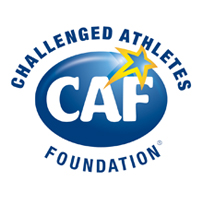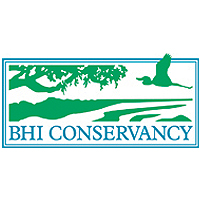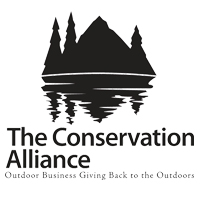Return to Badwater 2001
2001 finisher
I returned to Death Valley for a second go at 135 mile Badwater Ultramarathon against the mild protests from co-workers, friends and family. Why? Was the most prominent question? Why do you want to put yourself through that “torture” again? This is a most common view from most non-runners, and runners not familiar with ultra running or extreme sports. I do not consider it torture, I think it is “fun.” Besides, if you don’t challenge yourself every now and then, how do you know who or what you really are?
Look at it from my perspective: I love to run. The longer the run, the more I enjoy it. Compare it to a golfer. If anyone who enjoys playing golf, for enjoyment and some mild competition were given a chance to play golf with his golfing peers, for say 60 hours, I am sure that person would certainly do it. All the golf you can play in 60 hours for one green fee. Now would you call him or her a little crazy? Yes, probably.
I not only get the chance to run for 60 hours, if I want, or for however long it takes me to run the given distance, I also get to do it in a little heat. In this case it was 135 miles in approximately 130F degrees (atmosphere temperature). The reflective surface temperature can get a little hotter, about 150 to 180F degrees. But that does not happen until the afternoon and by then you are either acclimated or numb to the heat (fried), and besides, it is not that hot all of the time. The temperature at the start in Badwater this year was in the cool mid 80s.
Seventy-one ultra athletes toed the line for the Sun Precautions 2001 Badwater Ultramarathon. Some were repeats and some new comers, including six women. I ran the first 17 miles to Furnace Creek in 3:26, five minutes ahead of last year, as I was all fresh and ready to face what was in store for us later in the day. This section is spent renewing old acquaintances, meeting new friends and setting up the pace according to how you feel and how well trained you think you are. This part is easy as long as you don’t go too fast and exhaust your legs too early. Lots more fun is sure to come later.
The section between Furnace Creek and Stove Pipe Wells (don’t you just love the names) is a time for acclimating to the heat. During this section you will talk to God often and ask that He keep the sun behind a cloud and the temperature below 125. He does not listen to us very well as the temperature when I was approaching Stove Pipe Wells reached a deep frying 126 to 128. The secret here is to drink, drink, drink and then drink some more. You must stay hydrated or suffer the consequences. This is followed by peeing, peeing and peeing some more (you hope). Vacating the bladder is how you monitor your hydration level. I reached Stove Pipe by 3:30 PM, 9:30 into the race, 16 minutes ahead of last year.
But this is where the race really starts. By now the runner has run 41 gut-wrenching miles and processed gallons of Gatorade, water and copious amounts of various other drinks in hopes of remaining hydrated and fueled. Forty-one miles and you have only managed to go from 282 feet below sea level to five feet above sea level at Stove Pipe Wells.
Leaving Stove Pipe Wells, at my slow pace, you must not only face the hottest part of the day, you also have the dry hot winds that pick up off of the Panamint Mountain Range, and the climb up to Townes Pass. The climb is a seventeen-mile uphill battle of varying degrees of steepness. It starts out at about six percent grade for the first five to six miles, turns up to eight percent about six miles later then goes up to about a 10 percent upgrade (feels vertical) for the last four or five miles to the summit at Townes Pass. Just for fun, this year Caltrans added a two-mile stretch of fresh black oil to really hold the heat. I found myself shielding my face with my hands, as the reflective heat was unbearable.
I took two five-minute breaks going up to Townes Pass. These were the first times I got to sit down on a chair. My crew worked on my old tired legs by massaging the sore spots. The reward was waiting for me at the summit of Townes Pass where I laid down for about 50 minutes. Sleep was not possible because I was shivering-cold (it was about 83F degrees which felt like freezing compared to the daytime temperature) and the in and out traffic at this pit stop was non-stop. I did manage to rest and rejuvenate enough to be able to run down towards Panamint Springs, the third official time station. I arrived at Panamint Springs over an hour and a half ahead of my last year’s pace so I took advantage of the time and laid down for an hour.
By luck, Chris Kostman, RD, was vacating his room and was most gracious to allow me to take over his room for an hour. Being the diplomat that he is, he also made the room available to any other runner who wanted to shower or rest for a while. With other runners coming into the room, my rest was very broken up. So I left after an hour. This rest stop did not provide the rest I needed and sleep deprivation hit me hard at about 3:30 AM. I had trouble continuing up the steep grade to the Father Crowley Lookout Point. It was here that I asked my crew to set up a cot by the road and allow the truck to block the wind. It was windy and cold (85F degrees) at this time of the morning. I slept for 30 minutes and woke up feeling better and able to continue up towards Father Crowley and the summit of the second mountain range.
It was during this climb that I had to respond to the call of nature. I was so tired that I simply wanted to go home (not “quit” as quitting is not allowed in an ultrarunner’s vocabulary). I told my crew that if I was lucky, perhaps a rattle snake would bite me during my excursion into the bushes or a vehicle would hit me and merely break a leg while I crossed the road and I would have to involuntarily terminate my current death march. It was not to be.
Besides, I had a real motivator and reason to suck-it-up: I had dedicated my race to a very close friend and co-worker who, four weeks before the race, discovered she had cancer. She is doing very well now, thank God, but I wanted to show my support for her and drew strength from her. I thought of Laqueta often and knew I could not quit as I know she is a true winner. Her attitude and positive karma carried and motivated me and I knew I would never quit as long as I was able to move forward.
I reached the Father Crowley Lookout Point just after sunrise and with the sunrise came a new day. I usually feel like new after the sun comes out (second sunrise) during these races and I look forward to it and count on it to pick me up. It worked. I knew then that a successful completion was in-the-bag, just a matter of how well I would do time-wise.
The course after Father Crowley continues up for a few more miles but it is relatively flat to undulating. One could say it is very runable and actually an easy part of the course, but for being tired. The next time station is at the Darwin turn-off at about mile 90 (with just 45 miles to go to the finish). I did not compare my time to last year until I reached the 100-mile marker where I arrived a mere 21 minutes ahead of last year. It was a good sign as I did not have much support, pacer-wise, all night and most of the day before. I was pretty much on my own to set a comfortable pace and had nobody to whine to when I felt like it. So I can claim that I never did any whining.
After mile 100 we were essentially back in civilization and in cell phone service range. I managed a call home and spoke with my wife. (Coincidentally, at about this time I also received a call from one of my crewmembers from last year’s race). These calls proved to be a major uplift. None of my family was able to support me this year so any contact with family and friends was a major picker-upper, as I will explain later. After my conversation with my wife I felt uplifted and was able to run faster for quite a few miles. This allowed me to make up some time on which I had already given up.
Lone Pine is the last time station before the finish and a major milestone on this course. But before you get to Lone Pine you have to go past Keeler and around Owens Lake. Even though this part is very runable, it is also the longest, flattest, most boring part of the course. I seldom call any running surface boring but this section is as close as it gets. This is where the family thing came into play. I mentioned earlier how word from family and friends play a big psyche part. One of my sons, Kevin and his girl friend, Heidi, called me individually from Seattle. They asked how I felt. My response was that besides being totally exhausted, extremely stinky and deep-fried, I felt great. With Lone Pine and Mt. Whitney in sight, I was very motivated.
At 6:57 PM I arrived at the corner of Highways 395 and 136 – Lone Pine at last. I arrived at the time station 25 minutes ahead of last year. The beginning of the end comes as you leave Lone Pine and start up the Portals Road, the steep, switchback approach to the base of Mt. Whitney, and the finish line. It’s 13 grueling miles with about 5,000 feet of elevation gain. Yes, a climb of 5,000 feet in 13 miles. Sometimes the grade reaches 19 degrees, but it felt like 90. Last year I experienced a lot of hallucinations while going through the Alabama Hills, a beautiful part of the course. That was interesting. This year I felt very alone, as I had no apparitions to keep me company.
Throughout the last 24 hours I had experienced major heartburn with anything I ate. I relied mostly on Hammer Gel for energy and Gatorade and water for hydration. Coming out of Lone Pine my crew chief, H.E. West, a 2002 Baswater hopeful (total crew was two with Dave Molinaro, an accomplished tri-athlete) offered me a burger with lettuce, cheese, pickles and onions. I knew I would suffer the heartburn pain but the idea of eating hot food after 36 hours sounded so good that I accepted and ate more than half before my stomach realized it should burn. I managed to wolf down two-thirds before I could not stomach the rest. This food proved to be a charm as I got re-energized and “zipped” up the Portals Road to the finish in just under four hours. For you math wizards, that is approximately 18.5 minutes per mile. But I am getting ahead of myself.
Shortly out of Lone Pine the sun set on me and we only had a crescent moon (very romantic but I was alone) that soon went behind Mt. Whitney and total darkness set in. Going up this part of the course can be very scenic during the day. At night it is rather mundane until you are high enough to enjoy the “city” lights of Lone Pine. Not exactly a San Diego skyline but they do have some scattered visible lights at night. I received more calls from home and Seattle about a mile from the finish. It was great to hear from them again. I guess my family was as anxious for me to finish as I was. The difference was that I felt like burnt toast and they were toasty comfortable at home.
I continued up the Portals Road to a very welcome finish and a great surprise when I realized that my time was faster than last year. Not much, 31 minutes, which when spread over 135 miles is only seconds per mile but I am a year older too. Simply completing an event like this is considered a tremendous accomplishment, but you just had to be there.








